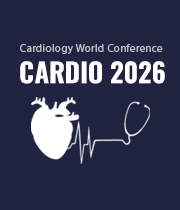Title : The difference between cystatin C- and creatinine-based estimated glomerular filtration rate may predict the long-term risk of aortic aneurysm/aortic dissection: A cohort study of the UK biobank
Abstract:
Importance: There is a lack of effective and easy-to-use tools for assessing the risk of Aortic Aneurysm/Aortic Dissection (AA/AD) and related adverse events in community populations. The impact of the difference between cystatin C- and creatinine-based estimated Glomerular Filtration Rate (eGFRdiff) on AA/AD remains unclear.
Objective: To examine the association between eGFRdiff and the risk of AA/AD to improve early prediction of this fatal event.
Design, Setting and Participants: This prospective cohort study included 376,512 participants from the UK Biobank enrolled at baseline between 2006 and 2010.
Exposures: eGFRdiff was calculated using both the absolute difference (eGFRabdiff) and the ratio (eGFRrediff) between cystatin C- and creatinine-based eGFR estimates.
Main Outcomes and Measures: The primary outcome was AA/AD. The secondary outcome was defined as AA/AD-related mortality. Incident was ascertained through linked electronic health records.
Results: During a median follow-up of 13 years, 3,423 participants experienced AA/AD, and 1334 developed VA. In the multivariable-adjusted model, long-term risk of AA/AD was significantly higher among individuals with eGFRabdiff <–15% compared with the moderate group (HR, 1.255[95% CI, 1.166-1.351]). Using eGFRrediff ≥0.6 as reference, subjects with eGFRrediff<0.6 demonstrated elevated AA/AD risk (HR, 1.621[95% CI, 1.078-1.135]). Similar results were observed for the secondary outcome of AA/AD-related mortality. Each 1-SD decrease in eGFRabdiff increased risks of AA/AD (HR,1.167[95% CI, 1.124-1.211]) and AA/AD-related mortality (HR, 1.256[95% CI, 1.184-1.332]). Similarly, every 10% decrease in eGFRrediff elevated risks of AA/AD (HR, 1.106[95% CI 1.078-1.135]) and AA/AD-related mortality (HR, 1.145[95% CI, 1.100-1.193]). These associations remained consistent across all sensitivity analyses.
Conclusions and Relevance: A greater negative eGFRdiff value was independently associated with higher risks of AA/AD and AA/AD-related mortality. Our study demonstrates that longitudinal eGFRdiff monitoring in community populations may represent a novel, clinically feasible approach for early identification of individuals at heightened risk of AA/AD and its associated mortality.




